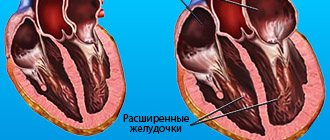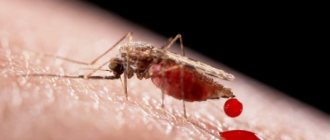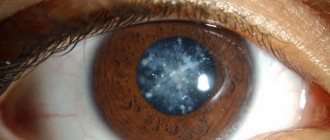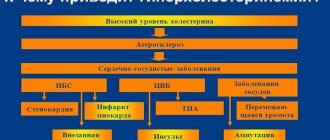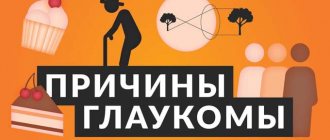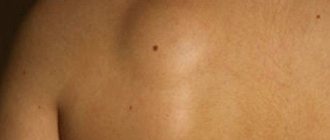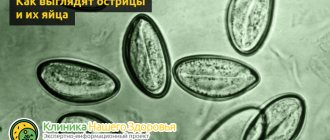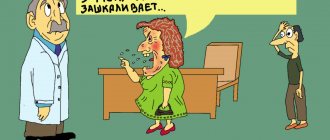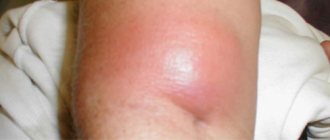Heart rhythm disturbances can manifest as sinus bradycardia. We will try to explain clearly what this is, since the pathology can occur in adults, children and even infants. Depending on the severity of the clinic, it brings more or less discomfort to the patient. With the correct selection of medications, sinus bradycardia can be treated quite successfully.
Normally, the heart is controlled by a pacemaker called the sinus node, which consists of first-order myocyte cells and generates an impulse for the gradual contraction of all parts of the heart. The location of the sinus node is the right atrium, or more precisely, the mouth of two vena cava, lower and upper. From here a signal is sent to the left atrium, and then to the atrioventricular node. The signal then travels through the His bundle and Purkinje fibers throughout the ventricular myocardium.
With sinus bradycardia, even after physical activity, there is no increase in heart rate, which is explained by the presence of factors affecting the sinus node.
A slowdown in the generation of an electrical impulse is often associated with various factors that cause sinus bradycardia. Is this disease dangerous enough to require appropriate treatment? This question is especially often of interest to young people who need to serve in the army. In some cases, the disease may be mild or completely asymptomatic. Despite this, it is necessary to carry out appropriate therapy so that the state of health does not deteriorate due to a lack of oxygen supply to the body.
Video: bradycardia folk remedies
What is cardiac bradycardia?
Bradycardia is a type of arrhythmia with a heart rate of less than 60 beats per minute. It can occur in absolutely healthy people, for example, in athletes or healthy people in a state of sleep - this is physiological bradycardia due to good training of the heart muscle.
The heart is our faithful engine that works throughout our lives. Any interruptions and stops can lead to disaster. The rhythm depends on many reasons. First of all, it is tuned to adapt to any human activity, to overcome stressful conditions and illnesses. The number of heart beats at rest in a healthy adult ranges from 60 to 90 per minute.
According to the number of heart beats, bradycardia is divided into:
- Mild when the heart rate (HR) is between 50 and 60 beats.
- Moderate if the heart works at a frequency of 40-50 beats.
- Pronounced when heart rate is less than 40 beats.
Regardless of the cause, bradycardia is based on a violation of the ability of the sinus node to produce electrical impulses at a frequency above 60 per minute or their inadequate distribution along the conduction pathways.
A moderate degree of bradycardia may not cause hemodynamic disturbances. A low heart rate leads to a lack of blood supply and oxygen starvation of organs and tissues, disrupting their full functioning.
Why is cardiac bradycardia dangerous and how to determine it?
Let’s talk further about why cardiac bradycardia is dangerous and what types it can be.
Differences in the symptoms of cardiac bradycardia divide it into the following types:
- The absolute form is a condition diagnosed without additional clinical studies. Diagnosis can be made based on data from measuring the patient's pulse.
- A relative form of pathology, the occurrence of which is associated with the action of a certain factor - disease, injury. A well-known case is the development of sinus bradycardia in athletes.
- Moderate sinus bradycardia, which often develops in children and occurs together with respiratory arrhythmia.
- Extracardiac variety, the causes of bradycardia in adults of this form are dysfunction of internal organs.
- A toxic form that develops against the background of poisoning.
- Drug-induced or reflex bradycardia that occurs due to taking certain medications.
- A physiological form that appears against the background of natural causes (hypothermia, sleep) and does not cause any particular suspicion.
Successful therapy of this disorder entirely depends on identifying the cause of bradycardia in adults and eliminating the sources of its development.
Infants have a high heart rate. So, during the first month of a child’s life, it is about 140 beats per minute, and by the year it decreases to 100 beats per minute. Observing a lower pulse in a young patient is a reason to examine him for the development of a heart rhythm disorder.
Infantile bradycardia is divided into two main types:
- absolute form, independent of external factors;
- a relative variety that develops under certain circumstances.
A common cause of pathology in children is hereditary predisposition. So, if there is a disorder in the mother or father, it can also be diagnosed in the child.
If the fetus experienced hypoxia while in the womb, there is a high probability that the baby will develop cardiac bradycardia in the future. The development of a pathological condition such as kernicterus can provoke a decrease in the number of heart contractions. The disease is accompanied by an increase in the amount of bile pigment bilirubin contained in the blood, which over time begins to inhibit the functioning of the heart.
Symptoms of sinus bradycardia in children are manifested in the following signs:
- deterioration of health;
- weakness and drowsiness;
- rapid loss of strength regardless of the intensity of the load;
- discomfort in the chest area;
- shortness of breath.
Young patients cannot clearly describe their sensations, and therefore parents should carefully monitor the behavior of their children. It is necessary to pay attention to the baby's apathy, lethargy, dizziness and inability to concentrate. Older children may experience chest pain in addition to these symptoms. It is worth remembering that the listed signs are not the norm.
It is necessary to carry out timely examination of young patients. Ignoring this can lead to complete thinning of the heart walls and death - this is why heart bradycardia is dangerous.
The discovery of bradycardia in adolescents does not pose such a danger to their health as for younger children. The development of pathology during this period is most often associated with the active growth of the patient and a hormonal boom, to which the heart has not yet had time to adapt. As puberty progresses, when a balance is achieved between these changes and the mechanism of their regulation by the central nervous system, the disorder disappears without causing significant harm to the adolescent’s body.
An increased heart rate is a common symptom of pregnancy. But in some cases, patients experience a decrease in this indicator - bradycardia. The occurrence of pathology in pregnant women can be associated both with general causes and with a regularly enlarging uterus. As the fetus grows, it expands, gradually oppressing the woman’s other organs. Compressing the abdominal area, the enlarging uterus leads to irritation of the vagus nerve, which is one of the reasons for a decrease in heart rate.
Most often, the disorder does not pose a risk to the normal condition of the patient and fetus, and therefore does not require special therapy. But in some cases, an abnormal heart rhythm can become a source of general malaise and dizziness for the patient. To eliminate these symptoms and improve the well-being of the pregnant woman, it is recommended to drink green tea and dark chocolate in small quantities.
Any woman is worried about the condition of her child, and therefore long-term observation of a patient with bradycardia or severe tolerance of its symptoms is a reason for additional examination of the condition of the fetus. For this purpose, the doctor prescribes a detailed Doppler examination of the fetus to the patient.
It should be remembered that the fetus itself cannot, like the mother, suffer from a low heart rate. While in her womb, he can only experience oxygen starvation (hypoxia). If this pathology is detected, the doctor prescribes a special therapy for the patient to help restore oxygen supply to the fetus.
Detection of hypoxia in the last trimester of pregnancy entails a cesarean section. This deviation refers to pathological conditions that the patient can diagnose independently. So, using a stopwatch you can count the number of heartbeats. Observation of a consistently low indicator relative to the norm indicates the presence of a violation.
Diagnosis of other forms of pathology includes the following procedures:
- taking an ECG, since bradycardia is clearly visible on the ECG, and this is one of the most accurate methods for determining sinus bradycardia;
- analysis of a daily electrocardiogram to clarify the diagnosis;
- conducting clinical studies - general and biochemical blood tests, hormonal diagnostics, ultrasound of the heart.
Classification
On the left is a healthy heart, and on the right is bradycardia
Depending on the mechanism of development, bradycardia is divided into the following types:
Sinus bradycardia, caused by decreased activity of the sinus node of the heart. Most often it occurs in a chronic (extracardiac) form. But it can also have an acute (intracardial) course, which is caused by myocarditis, post-infarction cardiosclerosis, acute myocardial infarction.
Non-sinus bradycardia associated with blockade of electrical impulses between the nodes of the heart:
- Impaired impulse conduction between the sinus and sinoatrial nodes;
- Impaired impulse conduction between the sinoatrial and atrioventricular nodes.
| Age norms of heart rate | ||
| Age | Normal heart rate | Heart rate that may be considered bradycardia |
| newborns | about 140 beats per minute | less than 110 beats per minute |
| up to 1 year | 130-140 | less than 100 |
| 1-6 years | 105-130 | less than 85 |
| 6-10 years | 90-105 | less than 70 |
| 10-16 years | 80-90 | less than 65 |
| adults | 65-80 | less than 55-60 |
Bradycardia in the fetus
Fetal bradycardia can occur at any stage of pregnancy. In the first half of pregnancy, a lack of oxygen can affect the formation of the baby's organs, causing them to underdevelop. In the second half, oxygen starvation leads to disturbances in the development of the central nervous system and problems during childbirth.
Bradycardia is dangerous because it can cause the death of a child not only during intrauterine development, but also during childbirth (fetal asphyxia), and even in the first hours after birth
In teenagers
Adolescent bradycardia occurs in the age period from 12 to 17 years and is explained by a hormonal surge and restructuring of the body, rapid growth, to the rhythm of which the body adapts. Usually goes away on its own as the puberty (transition) period fades.
Bradycardia of the heart in athletes
In athletes, bradycardia is a normal physiological state, since the load on the heart is high, it pumps a much larger volume of blood per contraction, due to which it needs a much smaller number of contractions per minute to fully supply the body with oxygen.
The main causes of physiological bradycardia in people involved in sports and leading an active lifestyle are associated with the increased functionality of their respiratory and cardiovascular systems, which provide the brain with a sufficient amount of oxygen even at a low heart rate.
Most often, physiological bradycardia is observed in the following athletes:
- runners;
- rowers;
- cyclists;
- football players;
- swimmers.
In other words, the training of the heart muscle is facilitated by those sports in which a person performs a moderate load for a long time.
Consequences and complications
With severe sinus bradycardia, a decrease in cardiac output occurs, which, in turn, reduces the blood supply to organs and tissues and the delivery of oxygen and nutrients to them. Brain cells are the most sensitive to such circulatory disorders. The insufficiency of their blood supply leads to the development of hypoxic changes and provokes the development of Morgagni–Adams–Stokes attacks, the main symptoms of which are loss of consciousness and a generalized convulsive seizure, lasting from several seconds to several minutes. During an attack, the patient may stop breathing and cardiac activity.
The combination of sinus bradycardia with ectopic arrhythmias, the development of which is due to the presence of additional foci of excitation in the thickness of the myocardium, each of which functions independently of the others, significantly increases the risk of thromboembolic complications in the patient.
Persistent severe sinus bradycardia can cause the patient to lose their ability to work.
Causes
Regardless of the reasons that provoked this condition, its basis is unchanged and lies in the disruption of the sinus node’s ability to produce electrical impulses at a frequency of 60 beats per minute, which is standard for the normal state of the body, as well as in ensuring their inadequate distribution along the conductive pathways.
The reasons that influence the provocation of a slowdown in the heart make it possible to divide bradycardia into three large groups:
- Pharmacological (medicinal) which is caused by taking certain pills or drugs.
- Pathological. In this case, the disease develops due to some deviation in the functioning of the body.
- Physiological, when slow heart function does not cause trouble. A person feels great with this rhythm.
Physiological include:
- bradycardia, recorded in trained people and athletes. Ordinary, everyday stress is not something prohibitive for them; the body begins to send signals about the need for higher frequency only under extreme stress, and then the heart rate increases;
- This also includes sinus bradyarrhythmia in children and adolescents;
- congenital complete AV block;
- idiopathic bradycardia.
The pulse with bradycardia, in these cases, will certainly increase with physical activity, and with sinus bradyarrhythmia it will also become correct.
Pathological bradycardia can be acute or chronic, depending on the specific causative factor.
- The acute form develops abruptly, simultaneously, under various conditions that directly or indirectly injure the heart, for example, poisoning, myocarditis or heart attack.
- Chronic bradycardia has existed for many years and is associated with severe, long-term diseases of the heart or other organs and systems.
Causes of sinus bradycardia
All factors influencing the development of pathology can be divided into two large groups: internal and external. In some cases, there is a joint influence of causes from one and another group. Their correct determination allows you to accurately establish a diagnosis and subsequently prescribe effective treatment.
Internal causes of sinus bradycardia
First of all, physiological
aging of the body
. Many processes slow down, resulting in age-related degeneration of organs and systems, including the heart muscle.
Cardiac diseases
are in second place in the list of external factors provoking the development of bradycardia. We are talking about inflammatory diseases of the myocardium, coronary heart disease, and cardiomyopathies. Some infiltrative pathologies such as amyloidosis and sarcoidosis also cause a slow heart rate.
Intracardiac causes:
- arterial hypertension;
- atrial fibrillation;
- myocardial infarction;
- heart defects;
- myocarditis;
- cardiac ischemia;
- degenerative disorders of the sinus node;
- atherosclerotic changes in the coronary arteries.
The development of sinus bradycardia is often observed in non-cardiac diseases. These include pathologies of various organs and systems of the body.
External factors for the appearance of sinus bradycardia
These include:
- disorders of the nervous system (stroke, trauma and infectious lesions of the central nervous system) and peripheral system (neuritis and neuralgia, tumor processes);
- improper use of medications, resulting in the development of toxic and poisonous conditions;
- alcohol abuse;
- hormonal imbalance (hypothyroidism, aldosteronism);
- physiological impact factors associated with fasting, aging of the body, low body temperature;
- hereditary predisposition.
The disease is often associated with various electrolyte disturbances
. With an increased concentration of calcium and potassium in the blood, as well as with a deficiency of the latter element, the heart rhythm may be disturbed towards slowing down.
Metabolic pathology
, associated with the thyroid gland or gallbladder, also negatively affects the performance of the heart muscle. First of all, diseases such as cholestasis (stagnation of bile) and hypothyroidism (insufficient functioning of the thyroid gland) affect.
Nervous system diseases
may be complicated by sinus bradycardia, which is often one of the first signs of a brain tumor. Neurotic conditions and increased intracranial pressure directly affect the heart rhythm, as well as vegetative-vascular dystonia, which is common at a young age.
In some cases, there may be not one, but several causes, then the symptoms become unclear and the course becomes protracted. But sometimes it is not possible to accurately determine the factor of influence, then they speak of an idiopathic manifestation of rhythm disturbance.
Symptoms of bradycardia in adults
Why does the heart need to beat at a certain frequency? The goal is one - to deliver nutrients and oxygen to the organs. This is only possible with blood pumped by the heart. If there is not enough nutrition, the organs stop performing their tasks or go into a protective, economical mode of operation. First of all, lack of nutrition affects brain cells.
Mild or moderate bradycardia generally does not impair blood circulation and does not contribute to the occurrence of certain symptoms of the disease. Obvious manifestations occur when the heart rate is below 40 beats or in the presence of organic lesions of the organ. Severe bradycardia is recognized due to the following symptoms:
- dizziness;
- weaknesses;
- fainting and semi-fainting;
- increased fatigue;
- chest pain;
- difficulty breathing;
- impaired concentration and memory;
- sudden change in blood pressure;
- short-term vision problems;
- cases of confused thinking;
- hypoxia;
- Morgagni-Edams-Stoke syndrome. The manifestation of this symptom requires immediate treatment. The syndrome cannot be ignored; in some cases it leads to respiratory arrest.
| Bradycardia stage | Symptoms in adults |
| Easy (beginner) | This type of bradycardia is most often physiological in nature and does not require medical intervention. To stop attacks, it is enough to change the regime and adjust the diet.
|
| Moderate bradycardia | The heart rate is between 40 and 50 beats per minute. This type is typical for older people and professional athletes - for them doctors consider this condition to be a variant of the norm |
| Severe (pronounced) | The pulse slows down to 40 beats per minute (sometimes lower), and characteristic symptoms appear.
|
How to recognize bradycardia?
Sometimes it is quite difficult to suspect a pathology, since a physiological slowdown of the pulse can occur with mild symptoms, and in some cases there are no signs and symptoms at all. In this case, bradycardia is determined by chance during a routine examination or when visiting a doctor with other problems and complaints.
Even with severe bradycardia, it is not always possible to diagnose the pathology on your own, since the signs of the disease are not characteristic and can occur with other diseases of the blood vessels and heart. To make an accurate diagnosis, the patient must see a doctor and undergo an examination. This should be done if at least two of the symptoms listed below occur.
Classification of bradycardia
Pale skin
Bradycardia is most often accompanied by a decrease in blood pressure and a slowdown in blood flow. This causes pale skin, which can appear in isolated areas or be generalized. Most often, the patient’s face turns pale; with severe disorders, bluish spots may appear, but this symptom occurs in a very advanced form of the pathology.
Chest pain
This symptom occurs only during the acute course of the disease, when the heart rate drops below 40 beats per minute. Soreness is the result of an acute lack of oxygen and the death of myocardial cells, therefore, if this symptom occurs, the patient must immediately receive emergency assistance, and after stopping the attack, go to the hospital.
Important! Angina pectoris occurs during severe emotional or physical stress, so it is important to control your psycho-emotional state and contact a specialist if you cannot cope with excitement and anxiety on your own.
Chest pain is one of the signs of bradycardia
Sometimes pain appears not only in the heart area, but can also occur behind the sternum and even radiate to the shoulder and the area between the shoulder blades. Any of these conditions requires consultation and examination by a cardiologist.
Loss of consciousness and dizziness
Fainting due to bradycardia occurs mainly in hypotensive patients. The body reacts sharply to the lack of oxygen, the patient immediately becomes dizzy, and short-term blurred vision may occur. Dizziness is one of the main signs of bradycardia, but it cannot be said that this is a characteristic symptom. The head may also feel dizzy in the presence of other heart pathologies, as well as diseases of the nervous, endocrine and digestive systems, so a person does not always understand that it is necessary to consult a cardiologist.
Dyspnea
Shortness of breath with bradycardia most often appears during heavy physical work, running and other stresses that the heart is not able to cope with due to impaired pumping function and slow blood flow. Sometimes shortness of breath is accompanied by a sharp dry cough and chest pain, as well as severe headaches that are difficult to relieve with the usual pills.
Dyspnea due to bradycardia most often appears during heavy physical work.
Other signs
Due to insufficient oxygen supply and slow blood circulation, the patient experiences chronic hypoxia of tissues and organs. In this case, not only the heart suffers, but also other important organs: lungs, brain, etc. The patient constantly feels weak, even after a sound and full sleep he wakes up in a “broken” state, and cannot concentrate on work.
The decrease in performance is chronic. This is especially pronounced among office workers, since in addition to the lack of oxygen, there are other negative factors: sedentary work, prolonged sitting at the computer, frequent stress and conflicts.
Experts consider a sharp increase in heart rate during sports or other activities to be another sign of bradycardia. This phenomenon is explained by the inability of the heart to compensate for the increased need of muscle fibers for oxygen molecules.
Important! All these symptoms can also occur with other diseases, so it is important not to self-medicate, but to contact a medical institution for qualified help.
What is the danger to the body?
Bradycardia caused by heart disease (sick sinus syndrome) has an increased risk of sudden cardiac arrest and ischemic stroke, especially if symptoms include fainting.
In other cases, it is not bradycardia itself that is dangerous, but the diseases that it may indicate (hypothyroidism, brain tumors, etc.).
If, during a thorough medical examination, specialists did not find any abnormalities, then a slow pulse in itself is not considered dangerous and is recognized as an individual characteristic of the body.
Most often, patients with bradycardia encounter the following problems:
- heart failure;
- blood clot formation;
- chronic attacks of bradycardia.
Treatment
If, apart from sinus bradycardia, no changes are detected, and it does not cause discomfort, then this condition is considered normal, and treatment is not prescribed.
Often such an illness is just a side symptom after another illness. Therefore, in order to get rid of disturbances in the functioning of the heart, it is necessary to eliminate or reduce the effect of the cause itself.
Treatment:
- Recommendations from a specialist. Very often, to improve your health, it is enough to take vitamin complexes, adhere to a special diet, and also take prescribed medications.
- Drug treatment method. If a person suffers from sinus bradycardia, then to improve the condition, the doctor prescribes drugs that increase heart rate.
- Surgery. If bradycardia is life-threatening (frequent fainting, severe decrease in heart rate, drug treatment has not brought results), the issue of installing a pacemaker is decided, which sets the rhythm of the heart muscle.
- If sinus bradycardia occurs due to poisoning, then specialists must carry out all detoxification measures.
- If the medication has a negative effect, the doctor should reconsider the dose of the drug used.
The main treatment is to eliminate the cause itself.
Diagnostics
Signs characteristic of bradycardia are identified during the collection of patient complaints and an objective examination. Upon examination, a rare pulse is determined, which in the sinus form has a regular rhythm, heart sounds of normal sonority are heard, and respiratory arrhythmia is often detected. Patients with detected bradycardia are recommended to consult a cardiologist.
An instrumental examination is prescribed, which includes:
- electrocardiography (ECG) - detects signs of atrioventricular or sinoatrial heart block, a decrease in heart rate. If necessary, daily ECG monitoring (Holter monitoring) is prescribed;
- Ultrasound examination of the heart (EchoCG) - the method allows you to assess the size of the heart, the presence of foci of degenerative and sclerotic changes in the heart muscle;
- load bicycle ergometry – allows you to evaluate the change in heart rate under the influence of dosed physical activity;
Can you help yourself at home?
With mild and moderate bradycardia - quite. Both classical medicines and folk recipes will help normalize the condition.
The algorithm is as follows:
- Measure your blood pressure and heart rate. This is necessary for subsequent assessment of the effectiveness of first aid.
- Take a tablet or two of a tonic: Citramon, preferably pure caffeine, as well as Aspirin-Cardio (if it is not available, simple acetylsalicylic acid, but the dosage is less). Zelenin drops help well, but they must be used with caution, the drug significantly increases heart rate. Start with 20 drops.
- Drink tincture of eleutherococcus, ginseng or eat a couple of spoons of lemon with cinnamon and honey.
- Take a horizontal position and move as little as possible. Physical activity can lead to fatal complications.
If there is no effect, call an ambulance within 20-30 minutes.
The following activities are shown on site:
- Introduction of Dopamine.
- Atropine injection.
- As a last resort, adrenaline is used.
Then the issue of transporting the patient to a cardiology hospital for comprehensive diagnostics and treatment is decided.
Moderate sinus bradycardia allows for primary self-care. If there is no effect, an emergency call is indicated. Complications - heart attack, stroke, cardiac arrest, cardiogenic shock, death.
Treatment of cardiac bradycardia
Treatment of the disease in question is carried out on a strictly individual basis, based on the specific pathology present, as well as the characteristics of the patient’s experience of this disease.
- Functional and moderately severe bradycardia, which are not accompanied by clinical symptoms, do not require conservative treatment.
- Bradycardia of organic, toxic or extracardiac origin requires, first of all, treatment of the underlying disease.
- Drug-induced bradycardia requires discontinuation of the drugs that caused the symptoms (or correction of their use)
What pills are prescribed for bradycardia?
In addition to treating the underlying disease that provoked bradycardia, a symptomatic increase in heart rate is carried out using the following medications:
- Atropine - administered intravenously or subcutaneously at 0.6 - 2 mg 2 - 3 times a day;
- Isadrin - administered intravenously at 2 - 20 mcg per minute in a 5% glucose solution until a normal heart rate is achieved;
- Eufillin - administered intravenously at 240 - 480 mg or tablets taken orally at 600 mg 1 time per day.
If the heart rate decreases, the patient will need to take anticholinergic drugs. These drugs include medications that block the effects of the parasympathetic nervous system on the body.
The following medications are used to treat bradycardia:
- platiphylline;
- atropine;
- metacin;
- homatropin.
In addition, in this case, antiarrhythmic drugs that regulate heart function are indicated:
- lidocaine;
- propatheon;
- gift;
- verapamil.
Potassium and magnesium salts also have an antiarrhythmic effect.
Surgery
Surgical treatment for bradycardia is used very rarely and only in cases where a decrease in heart rate significantly affects hemodynamics. The location and nature of the surgical intervention are determined by the cause of the bradycardia. For congenital anomalies in the development of cardiac tissue, surgical correction is done as far as possible in childhood to ensure normal growth and development of the child.
Treatment of sinus bradycardia
Moderate and mild sinus bradycardia does not require drug therapy, while complex rhythm disturbances can be treated in two ways: conservative and surgical.
Severe bradycardia is often manifested by the patient fainting. In this case, you should not panic, but immediately call an ambulance.
Before the medical team arrives, the following actions are performed:
- The patient lies on a flat surface.
- The top buttons of the shirt are unbuttoned, or if other tight clothing is worn, it is removed.
- You need to try to feel the pulse and count the number of heartbeats.
- If the patient is breathing but is unconscious, then a swab soaked in ammonia or vinegar should be held to the nose for a few seconds.
- Lack of breathing and heartbeat is an indication for artificial ventilation and chest compressions.
All types of bradycardia caused by conduction disorders should be treated in a hospital.
Electrical pacemaker
It is recommended for implantation in cases where natural aging of the body is observed or bradycardia is not amenable to drug treatment.
Each patient should be prescribed in the outpatient card those arrhythmic drugs that are contraindicated for him. For example, anticholinergics should not be used for distal AV block, as they will aggravate the course of bradycardia.
First aid for bradycardia
A sudden attack of bradycardia is also called Morgagni-Edens-Stokes. Symptoms by which it can be recognized at the very beginning:
- A state of nervousness and anxiety, often without cause;
- The pupils are dilated;
- Redness of the facial skin, swelling of the neck veins;
- After some time, the redness gives way to pallor;
- Severe dizziness;
- Twitching of the muscles of the face and limbs, which can develop into convulsions;
- Stiffness of movements, a person “cannot feel his legs”;
- Loss of consciousness;
- Fecal and urinary incontinence;
- Decreased breathing rate.
If several symptoms appear, you should immediately call emergency help, and then try to stop the attack yourself.
Important! If the patient has lost consciousness or experiences severe pain in the heart area or behind the sternum, it is necessary to call an emergency team.
If someone in the family suffers from bradycardia, the rest should know the rules for providing emergency care, since in the case of a significant decrease in heart rate (less than 35 beats per minute), there is a possibility of death.
What should be done if a person’s heart rate begins to drop sharply due to bradycardia?
- Heart rate less than 50 per minute
You should ensure air flow - open a window (in winter - a window) or go outside. A warm bath is beneficial. It is recommended to drink a cup of strong tea or natural coffee.
- Heart rate less than 40 per minute
The patient should be placed with his legs elevated. For heart pain, he can be given a Nitroglycerin tablet; for an attack that occurs for the first time, belladonna extract (crush two tablets and put under the tongue); for recurrent attacks, combined pathologies of the heart and blood vessels - Izadrin (only after consultation with a doctor)
- Loss of consciousness
This means that the heart rate has dropped to 25 beats per minute or below. This condition is dangerous, as it can lead to oxygen starvation and serious disruption of blood circulation in the brain.
It is necessary to call an ambulance and give the patient artificial respiration - hold his nose and take three breaths from mouth to mouth. After three artificial breaths, the pulse is measured. If the pathologically low heart rate remains, inspiratory stimulation is repeated.
The emergency doctor will carry out the following activities:
- temporary cardiac pacing using a defibrillator;
- atropine 0.1% - 1 ml intravenous bolus (up to 4 ml per day);
- dopamine 200 mg per 200 ml of saline intravenously;
- adrenaline 1% - 1 ml per 200 ml of saline solution intravenously;
- aminophylline 2.4% - 5 - 10 ml intravenous bolus;
- prednisolone 50 mg intravenous bolus.
In the case of mild or moderate bradycardia, not accompanied by signs of a heart attack, stroke, or acute heart failure, the patient, after stopping the attack, can be left at home under the supervision of a local doctor from the clinic.
Symptoms
A slight decrease in heart rate does not cause serious problems. Serious signs of bradycardia are detected only when the heart muscle contracts less than 40 times per minute. Typically a person may present the following complaints:
- Increased fatigue.
- Dizziness.
- Fainting.
- Chest pain.
- Dyspnea.
Very often, the only symptoms of bradycardia that a person may notice are increased fatigue and dizziness. That is why, if you suspect chronic fatigue syndrome, you need to consult a specialist.
In children, the presence of bradyarrhythmia can be noticed if school performance has decreased significantly. Teachers complain about his inattentiveness and inability to remember the material. In this case, it is important to promptly contact your local pediatrician to confirm or rule out bradycardia.
You need to understand that against the background of bradycardia, cerebral circulatory failure may occur. The ability to remember often decreases, and the person becomes absent-minded. Sometimes vision may be impaired.
A particularly dangerous condition that can occur due to a decrease in heart rate is Morgagni–Adams–Stokes syndrome. These are transient fainting conditions caused by a sharp deterioration in blood supply to the brain due to severe bradycardia. The attacks come suddenly and usually last for several minutes, after which they pass.
Folk remedies
Decoctions of herbs and various types of tinctures will help, perhaps, speed up the pulse, but will not eliminate the cause. Bradycardia is dangerous, as stated above, because you can “get used to” it, but it can also lead to cardiac arrest. Therefore, with all due respect to traditional medicine, it is safer to treat cardiac bradycardia using traditional methods.
- Ginseng root. Take 15 g of dry root, grind, pour in 0.5 liters of vodka, leave for 20-30 days, shake every 1-2 days. Take 30–40 drops per day. The maximum duration of treatment is 1.5 months. Then take a month break.
- Natural grape juice has an excellent strengthening effect on the heart. The daily dose is 400 milliliters.
- Place a glass of boiling water with two tbsp in a water bath for 15 minutes. l. yarrow, then leave for another hour. Take the finished decoction three times, two tbsp. l. daily.
- Yarrow decoction for bradycardia. You need to take 50 g of dry yarrow and fill it with half a liter of water. Boil for 10–15 minutes, and then leave for exactly an hour. You need to take a tablespoon of the decoction three times a day;
- Prepare the following composition - a collection of 30 g. calamus with rowan leaves, 50 gr. dandelion roots, currant leaves and hawthorn inflorescences. Place a tablespoon of the prepared mixture in 200 ml of boiling water, leave for half an hour, filter. The medicine should be taken twice a day.
How to treat sinus bradycardia?
Emergency treatment of bradycardia is most appropriate when the patient’s general condition is impaired due to a decrease in heart rate of less than 50 beats/min:
- Lay the patient on his back, provide conditions for good access to fresh air (open the window, remove or unbutton clothes that are compressing the chest and neck).
- Assess the presence of consciousness, breathing, pulse in the arteries of the neck and heartbeat. Only in their absence are resuscitation measures indicated - cardiac massage and artificial respiration.
Medications
The complex of treatment of sinus arrhythmia also includes the use of medications. Drugs are prescribed depending on the leading ailment.
If a person has sinus arrhythmia caused by anemia, he is prescribed medications containing iron to increase the concentration of hemoglobin in the blood. If the anemia is severe enough, the patient is given a blood transfusion.
In the case of thyroid hypertrophy, patients are prescribed special medications that reduce the secretion of hormones from this organ.
For patients with high fever, acute inflammatory or infectious processes in the body, or intoxication, the doctor prescribes special detoxification treatment and fluid intake in large volumes.
If the patient has been diagnosed with heart disease, treatment is carried out with the following medications:
- Beta blockers, if the patient mostly has tachycardia;
- Angiotensin-converting enzyme inhibitors or angiotensin receptor antagonists - if the patient has heart failure or has suffered a heart attack of the muscular wall of the heart;
- Diuretics - in the presence of heart failure caused by heart defects, post-infarction cardiosclerosis or complications of inflammation of the muscular lining of the heart.
| Drug names | Indications for use for women and men |
| Zelenin drops | Take orally (drink) for any form of bradycardia in case of maintaining consciousness |
| Atropine sulfate | Administered intravenously or subcutaneously when heart contractions decrease to less than 50 beats/min |
| Dopamine | Sinus bradycardia accompanied by a decrease in blood pressure |
| Adrenalin | Administered subcutaneously/intravenously in case of critical deceleration of the rhythm (less than 30 beats/min) (cardiac arrest) |
You can also get rid of it using traditional medicine, but this can only be done after consulting your doctor.
The most effective are considered:
- black currant and nettle;
- hawthorn and dandelion roots;
- rosehip and tea rose;
- chamomile and yarrow;
- calamus root and rowan.
When is a pacemaker necessary?
For bradycardia associated with CVS with symptoms of insufficient blood supply to organs, implantation of a pacemaker is indicated. The same tactics are used if a rare pulse occurs after an infectious disease, for example, myocarditis.
For severe sinus bradycardia caused by SSSS, an atrial pacemaker (AAI) or a dual-chamber pacemaker (DDD) is usually installed. If there is a choice, it is not recommended to install AAI, since SSSS often transforms into atrial fibrillation, and the work of the stimulator becomes unnecessary and ineffective.
Dual-chamber DDD stimulation is also preferable because SSSS is often combined in elderly people with atrioventricular block (the so-called binodal disease). The installed dual-chamber stimulator will generate impulses for contractions of both the atria and ventricles, ensuring a normal heart rhythm.
Forecast
Patients with bradycardia are constantly monitored by a cardiologist, and the dose of medications should be taken daily in accordance with the doctor's prescription. Lack of blood supply to the brain, heart and internal organs can cause a complex of symptoms:
- frequent dizziness, memory loss, behavior changes;
- angina attacks;
- a sudden fall may result in bruises, fractures, and head injuries;
- functional failure develops on the part of the liver and kidneys, and chronic diseases worsen;
- It is impossible to cure bradycardia with complete blockade using conservative methods; death is possible with the next unexpected attack.
Timely elimination of extracardiac causes, organic heart damage, toxic effects on the myocardium, and correct selection of drug dosages will prevent the development of bradycardia.
Treatment methods
Surgical, medicinal and folk. Often in combination.
Drugs
Toning. Among the groups:
- Cardiac glycosides. Normalize the functional activity of the organ. They have a cardiotonic effect. Lily of the valley tincture, other medicines.
- Citramon, Aspirin-Cardio, Caffeine, Zelenina (with caution). Helps speed up the rhythm.
- Sedatives of plant origin. Motherwort and valerian.
It is better to stay away from beta and alpha blockers, ACE inhibitors and calcium channel blockers, as well as tranquilizers. They have exactly the opposite effect. If hypertension occurs, a strictly adjusted dosage is selected.
Surgical methods
The main method is the installation of an artificial pacemaker (pacemaker). Severe sinus bradycardia is treated surgically in 80% of cases. Urgent care is indicated after the patient has been brought out of critical condition.
Traditional methods
- Eleutherococcus tincture (2-3 spoons 3 times a day).
- Alcohol preparation of ginseng (30 drops 1-2 times a day).
- Lemon with cinnamon and honey (3 l. 2 r.d.).
- Decoction of nettle, chamomile (1:1, 300 ml of water per 100 grams of raw materials).
- Hawthorn (15-20 drops).
Lifestyle changes also make a difference. Among the methods:
- Quitting smoking and alcohol.
- Normalization of physical activity (several hours of absenteeism per day, exercise therapy).
- Drinking regimen - 2 liters.
- Salt - 12 grams.
- Rations - treatment tables No. 3, No. 10.
Can:
- Fruits, vegetables (especially apples, bananas, pears, kiwis, potatoes).
- Kissels, berry decoctions and others.
- Porridge.
- Dietary meat, protein, soups based on these varieties.
- Fermented milk products.
- Butter.
- Eggs.
- Honey, dried fruits.
- Coffee.
- Tea.
- Chocolate.
It is forbidden:
- Fast food.
- Fat meat.
- Baked goods, fried pies.
- Canned food, semi-finished products.
Cooking method: boiling, steaming and baking. Small meals, overeating and eating at night are unacceptable.
Prognosis and possible complications
The probability of consequences without treatment is 25% within 2-3 years. Under the condition of complex therapy - 10% or less. In 95% of cases, drug supervision has a positive effect. The remaining 5% requires the installation of a pacemaker.
Possible complications include:
- Heart attack. Acute malnutrition of the heart muscle with its subsequent death and replacement by scar tissue.
- Stroke (ischemic). Transient attacks.
- IHD and organ dysfunction.
- Heart failure.
- Cardiogenic shock.
- Death.
Causes of bradycardia - physiology and disease
In our experience, bradycardia occurs because pressing on the eyeballs is recognized by the central nervous system as a symptom of increased intracranial pressure.
It can be reduced by reducing blood flow to the brain, and this is possible by reducing cardiac output and cardiac output. The brain gives an order to the autonomic nuclei of the vagus nerve, and it slows down the heart. Thus, we “deceived” the brain.
Physiological slowing of heart rate also occurs in athletes with a large trained heart mass: weightlifters.
In some cases, bradycardia develops with increased external pressure: when descending into deep caves and mines that are located below sea level, as well as when being in a pressure chamber. Other reasons for the development of pathological bradycardia are:
- Myocardial infarction, especially in the basal regions;
- Taking medicinal antihypertensive drugs: anaprilin, diltiazem, cardiac glycosides, clonidine, reserpine;
- In psychiatric practice, a slowdown in rhythm is caused by the administration of lithium salts;
- Hypothyroidism and myxedema, with a lack of thyroid hormones;
- Hypothermia, or hypothermia;
- Hyperkalemia;
- Intracranial hypertension (with meningitis, encephalitis, brain tumors, hydrocephalus).
Treatment options
Moderate bradycardia, which does not manifest clinical symptoms, does not require drug treatment. If a person has organic, extracardiac or toxic bradycardia, the underlying pathology is treated. If it was caused by taking medication, then a dosage adjustment is made. Sometimes it may be necessary to cancel them.
Hemodynamic disorders are treated with extracts of belladonna, ginseng, and eleutherococcus. It is necessary to take Isoprenaline, Ephedrine, Caffeine tablets. The choice of dose of drugs for bradycardia is carried out individually. Intensive treatment of bradycardia is necessary with the development of angina pectoris, a sharp decrease in pressure, acute heart failure, and ventricular dysfunction.
An acute attack of bradycardia can be treated with the following medications:
- Atropine - administered intravenously or subcutaneously;
- Isadrin is administered intravenously in a glucose solution until the heart rate stabilizes;
- Eufillin is administered intravenously or orally.
- Cordiamine is administered subcutaneously or orally in the form of drops.
First aid should be provided as early as possible.
In some cases, patients are prescribed the dietary supplement Kudesan. Zelenin drops for bradycardia are taken in quantities of up to 40 drops, three times a day.
If a person exhibits Morgagni Adams Stokes syndrome (MES syndrome), then he needs to visit a cardiac surgeon to decide on the implantation of a pacemaker. This is an artificial heart pacemaker that generates the necessary impulses at a given frequency. It is impossible to cure bradycardia in this way, but it is the pacemaker that can establish normal heart function and prevent the development of serious complications.
Forecast
The presence of organic lesions negatively affects the prognosis of the pathology. It is further aggravated by the presence of Morgagni Adams Stokes attacks. If bradycardia is combined with tachyarrhythmias of the heterotropic type, then the patient has an increased likelihood of thromboembolism. If bradycardia is not treated, the patient may experience damage to many organs. Persistent heart rhythm disturbance leads to disability of the patient.
A physiological change in heart rate without significant clinical manifestations of bradycardia is not associated with a risk for the patient.
Kinds
- Absolute bradycardia. A specialist can identify this quite quickly, the symptoms are clearly pronounced.
- Relative bradycardia. It can be a complication after prolonged fever, meningitis, various injuries and infections.
- Moderate bradycardia. This includes the case when when a person inhales, the heart rate increases, and when exhaling, it decreases. (breathing rhythm disturbance).
- Extracardiac bradycardia. Its development is possible with hypofunction of the thyroid gland, various neurological disorders and diseases of the internal organs.
Classification
- Organic. It is provoked by myocardial infarction, myocarditis, and cardiosclerosis. These diseases weaken the sinus node, leading to its disease, which is why bradycardia develops.
- Medicinal. This is achieved by taking cardiac glycosides, reserpine, verapamil, nifedipine, etc.
- Toxic. This form of arrhythmia is caused by serious intoxication of the body due to hepatitis and typhoid fever.
Adrenergic agonists
Adrenomimetics are drugs of plant and chemical origin that act on adrenergic receptors, causing a specific response in the body. There are 4 groups of funds in this group.
Also read: Using mustard plasters for high blood pressure
When treating bradycardia, use:
- beta-adrenergic agonists - stimulate receptors in the myocardium, which helps to increase heart rate;
- adrenomimetics of presynaptic action - when used, norepinephrine is released into the synaptic cleft. This stimulates receptors and increases heart rate.
Typical representatives:
- ephedrine;
- adrenaline drugs;
- norepinephrine;
- isadrin.
Drugs in this group are not prescribed for acute heart attacks, stenosis of vascular lines, or thrombophlebitis. Among the side effects, patients noted dry mouth, nausea, hand tremors, and increased heart rate.
Antiarrhythmic drugs
Antiarrhythmic drugs are a broad group of drugs for the treatment of sinus rhythm disorders, including bradycardia. Many of them additionally have a hypotensive effect and are more often indicated for tachycardia.
Typical representatives of this class of drugs:
- Novocainamide;
- Difenin;
- Ibutilide;
- Verapamil.
The list of contraindications and side effects for medications in these groups differs, since they have a certain effect on the cardiovascular system.
Course of drug treatment
Before drawing up a treatment regimen, the doctor will need to prescribe an examination to exclude an organic form of arrhythmia. If it is physiological, then there is no need to use drugs. In other cases, the specialist will advise what to take for bradycardia, focusing on the primary pathological process.
In the early stages, drops of “Zelenin” will be enough. They have a complex effect on the heart muscle due to the presence of belladonna, menthol and valerian. No less relevant for eliminating mild cases of arrhythmia are homeopathic remedies based on medicinal plants:
- "Beauty extract";
- "Ginseng tincture";
- "Eleutherococcus extract."
To stimulate the work of the heart muscle, preparations containing caffeine are well suited. They accelerate the frequency of contractions and have a beneficial effect on the endothelium (the layer of cells lining the walls of blood vessels). To improve the effect, a combination of the above mentioned means is allowed.
If there is no result, drugs with a more intense effect may be required. The following groups of drugs are commonly used:
- Beta and alpha adrenergic agonists stimulate adrenaline receptors, thereby increasing heart rate.
- M-anticholinergic blockers block the innervation of the parasympathetic nervous system, increasing the influence of the sympathetic one.
The most popular drugs for cardiac bradycardia from this group are:
- "Izadrin";
- "Atropine"
- "Ipratropium Bromide";
- "Orciprenaline Sulfate";
- "Ephedrine Hydrochloride";
- "Atrovent".
"Izadrin"
"Isadrin" represents a group of beta-agonists. It is often prescribed for bradycardia and heart block. The drug does not have a selective type of effect and affects beta-1 and beta-2 adrenergic receptors, so the therapeutic effect extends to all organs that have these receptors. During blockade, Izadrin improves sympathetic innervation, which leads to restoration of conductivity, increased arousal and increased heart rate. The effect of this medication is similar to adrenaline, ephedrine and other sympathomimetic substances. It is distinguished by a significantly lower number of adverse reactions. Isadrin also does not actually increase blood pressure or cause other types of arrhythmias.
This medicine helps well against bradycardia caused by disruptions in atrioventricular conduction. It removes the blockade that has arisen and prevents attacks. Izadrin is no less relevant for cardiogenic shock, which is characterized by acute left ventricular failure.
It is not recommended to take the drug in the following cases:
- acute phase of infarction;
- disturbances in heart rhythm;
- advanced atherosclerosis.
In some cases, taking Izadrina causes tachycardia (rapid heart rate) and activation of ectopic (replacement signal) foci, which causes various arrhythmias. Sometimes it also provokes tremor (trembling) of the limbs, nausea and pathologies of the thyroid gland. These tablets should be taken with caution for angina pectoris.
"Atropine"
"Atropine" is an M-cholinergic receptor blocker. It is used to relieve tremors caused by Parkinson's disease, increased vagal tone, or as a remedy for beta blocker overdose. The effect on the central nervous system increases heart rate, improves conductivity and causes a slight increase in blood pressure.
The regimen for using the drug should be selected by the attending physician, focusing on the patient’s condition. The slightest overdose manifests itself as follows:
- tachycardia;
- decreased visual acuity;
- dilated pupils;
- dizziness;
- intestinal atony.
It is not recommended to use the drug in the following cases:
- glaucoma;
- keratoconus;
- children under 7 years old.
"Ipratropium Bromide"
A reliable beta-adrenergic receptor stimulant is Ipratropium Bromide. The drug improves the functioning of the heart, increasing the frequency of its contractions, reduces the secretion of glands, promotes the expansion of the bronchi and does not affect the nervous system. The effect rendered makes it extremely popular for asthma, conduction disorders and bradycardia. The maximum effect is observed after 1.5-2 from the moment of administration.
If the dosage is selected incorrectly or contraindications are not observed, Ipratropium Bromide can cause the following side effects:
- bowel dysfunction;
- dry mouth;
- increased level of ophthalmotonus;
- decreased visual acuity;
- disruptions in the genitourinary system;
- loss of appetite;
- decreased sweating.
It is prohibited to take the drug in the following cases:
- period of pregnancy and lactation (breastfeeding);
- narrowing of the intestinal lumen;
- glaucoma;
- tachycardia;
- megacolon (intestinal malformation);
- prostate enlargement.
"Orciprenaline Sulfate"
Orciprelanine Sulfate is considered a reliable beta-adrenergic receptor stimulant and anti-asthmatic agent. In terms of the nature of the effect, the drug is virtually identical to Izadrin. Both medications increase beta-adrenergic receptor perception and improve atrioventricular conduction.
As a means of prevention, Orciprelanine Sulfate is used for bradyarrhythmia of any form. It is also used to treat the risk of Morgagni-Adams-Stokes syndrome and to reduce intoxication caused by digitalis-based drugs.
The list of side effects of Orciprelanine Sulfate is mostly identical to Izadrin, but this drug is better tolerated in most cases. It is contraindicated only in the presence of advanced atherosclerosis.
"Ephedrine Hydrochloride"
Ephedrine Hydrochloride is usually prescribed to simultaneously stimulate alpha and beta adrenergic receptors. Its effects are similar to adrenaline. The drug helps achieve the following goals:
- slowing down the peristalsis of the gastrointestinal tract;
- increase in blood pressure;
- increased blood sugar levels;
- vasoconstriction;
- dilated pupils;
- improving the passage of signals through the heart muscle.
Because of its effects, “Ephedrine Hydrochloride” is prescribed only if there are clear contraindications to other drugs from this group. It is better not to use it before bedtime, as stimulation of adrenergic receptors can cause insomnia. The most common side effect of the drug is a slight tremor, which gradually goes away. Other undesirable reactions of the body occur rarely. They are associated with overdose or individual intolerance.
Ephedrine Hydrochloride is contraindicated in the following cases:
- organic damage to the heart;
- atherosclerosis;
- hyperthyroidism.
"Atrovent"
Doctors advise taking Atrovent to quickly increase your heart rate. It belongs to the group of beta-adrenergic receptor stimulants that do not affect the central nervous system and are recommended for sinus bradycardia. When the dosage is selected correctly, the drug is tolerated quite well, but sometimes the following side effects occur:
- decreased appetite;
- bowel dysfunction;
- dry mouth;
- tachycardia;
- increased ophthalmotonus;
- decreased concentration;
- problems with urination.
The drug is not recommended for use in the presence of the following contraindications:
- high ophthalmotonus;
- enlarged prostate gland;
- stenosis of the intestinal lumen;
- first 3 months of pregnancy.
Vitamins
Vitamin medications for bradycardia are not the main element of therapy. This is an aid. Indicated for proven vitamin deficiency and mineral deficiency.
What the doctor will prescribe:
- Panangin is a complex medicine containing magnesium and potassium. These microelements participate in all metabolic processes and have a stabilizing effect on the heart muscles;
- Aevit - a complex of vitamins A and E - powerful antioxidants, strengthen the vascular wall, promote stable myocardial function;
- Vitamin C as part of any vitamin complexes - to reduce the risk of developing atherosclerosis;
- Group B - Neurovitan, Neovitam, Neurobion - stabilize the functioning of the nervous system, eliminate vascular spasm, and improve blood supply to the heart muscles.
Dosages and negative effects of drugs are different. The most common side effect that patients complained about was impaired bowel movements.
If bradycardia appears, you need to undergo an examination and identify the cause of the pathology. Irregular heart rhythm is a symptom that should not be ignored. Like, Nitroglycerin or Validol under the tongue and forward towards new exploits. Such inattention to oneself can end sadly.
How is the disease classified?
There is such a classification of pathology.
- Sinus bradycardia of the heart (develops due to disorders of automatism of the sinus node).
- Atrioventricular (with this heart disease, the conduction of impulses is impaired).
- Acute bradycardia occurs with a heart attack, myocarditis, or poisoning.
There are different types of disease based on etiology:
- neurogenic, or extracardiac;
- organic (develops as a result of heart damage);
- medicinal (occurs as a side effect from taking certain medications);
- toxic;
- degenerative;
- reflex;
- central.
If the causes of bradycardia in adults cannot be established, then it is considered to be of the idiopathic variety.
What pills are needed to treat and eliminate the symptoms of bradycardia
Cardiac bradycardia is a type of arrhythmia in which the heart rate is very weak - 60 beats per minute or lower.
The attack is accompanied by weakness, loss of consciousness, and pain in the heart area.
A complication of this disease can be expressed as heart failure. To avoid this, the patient must know which tablets are used to treat the symptoms of bradycardia.
Side effects
Tolerability of drugs for bradycardia varies depending on the pharmacological group to which the drugs belong. Accordingly, the side effects inherent in medications of different categories vary.
M-anticholinergics
Since the main point of action of the M-anticholinergic blocker is the blood vessels, a distinction is made between the negative consequences of taking it when used systemically or when used locally.
Systemic action is characterized by:
- dry mucous membranes in the oral cavity;
- cardiopalmus;
- lack of stool;
- urinary retention;
- pupil dilation;
- photophobia;
- accommodative paralysis;
- vertigo;
- partial loss of tactile sensitivity.
For local use (eye drops), in addition to dry mucous membranes, tachycardia and photophobia are added: eyelid hyperemia, swelling and redness of the conjunctiva and eyeball.
Beta-agonists
Since drugs for bradycardia in the beta-agonist category affect the myocardium, side effects manifest themselves in the form of:
- tachycardia;
- heart rhythm disturbances;
- formation of ectopic pacemaker foci;
- extrasystoles;
- ventricular fibrillation.
Additionally, dry mucous membranes, nausea, and hand tremors are noted.
Beta blockers
Drugs of this group contact beta receptors, causing:
- from the blood vessels and heart - impaired atrioventricular conduction, symptoms of heart failure, rarely - decreased rhythm, hypotension;
- from the digestive system - dyspepsia, nausea, dry mucous membranes;
- from the nervous system - fatigue, fainting, depression, mild headache with dizziness, insomnia, paresthesia of the limbs, loss of concentration;
- from the ocular apparatus – conjunctivitis;
- from the endocrine system - decreased erectile function, hypoglycemia;
- from the respiratory system - bronchial obstruction (if there is a predisposition).
Possible skin rashes, itching, redness of the dermis, hyperhidrosis.
Sympathomimetics
They have systemic and local effects, provoking:
- from the nervous system - migraines, insomnia, irritability, motor activity, vertigo, convulsions, hand tremors, loss of sensitivity, dilated pupils, blurred images, hallucinations, hyperhidrosis, pale skin;
- from the blood vessels and heart - rhythm disturbance, cardialgia, ischemia, blood pressure fluctuations, facial hyperemia, pinpoint hemorrhages, shortness of breath;
- from the digestive system - symptoms of intoxication, chills, hyperthermia, lack of appetite, heartburn, aphthae in the mouth;
- from the urinary system - urinary retention, pain when urinating.
Allergic reactions are rare.
Sedatives
The drugs affect the nervous system, so side effects appear in the form of:
- drowsiness;
- dizziness;
- loss of concentration.
Rarely – allergies. With long-term use - drug intoxication.
Vitamins
Medicines have a systemic effect, negative consequences during the treatment of bradycardia manifest themselves in the form of:
- dyspepsia;
- nausea;
- pain in the epigastric region;
- heart rhythm disturbances;
- seizures;
- electrolyte imbalance.
Magnesium preparations
Medicines are well tolerated, rarely possible:
- dyspepsia;
- nausea;
- flatulence;
- fecal retention;
- allergic rashes.
